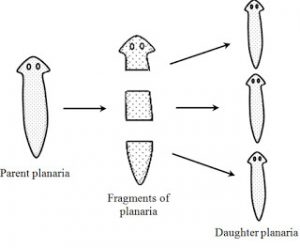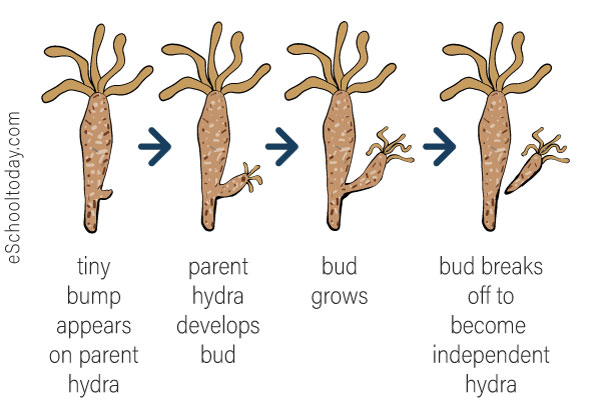Definition
Reproduction is a biological process for organisms in order to preserve its kind.
How Organisms Reproduce
Reproduction in organisms are divided into 2, vegetative and generative reproduction.
Vegetative Reproduction
A vegetative reproduction is any form of reproduction that don't preceded by the male and female sex cells.
Fragmentation

Fragmentation on planaria. Source: classnotes.org.in
Division is a reproduction method by dividing itself, usually done by single-celled organisms (protozoa) such as amoebas and paramecium.
Spore
Spore is a reproduction method done by some plants such as moss, fungi, and ferns.

Fern Metagenesis. Source: Kompas.com

Moss Metagenesis. Source: roboguru.ruangguru.com
Buds / Shoots

Budding on a hydra. Source: eschooltoday.com
A bud is the base of stem on a plant such as hydras, or bananas (for higher and more complex organisms) that will develop into other organs.
Adventitious buds is a wild bud that doesn't grow on the stem, but grows on the side of the leaves or roots, such as Kalanchoe pinnata.
Stolon
Stolon is a stem that spreads over the land surface. Plants that reproduce this ways are Cyperus rotundus, Centella asiatica, and more.
Rhizome
Rhizomes are stems that grow under or on the soil, such as ginger, tumeric, curcuma, and more.
Generative Reproduction
Generative reproduction is a form of reproduction that invovles the meeting of a male and female sex cells (sperm and ovum), or mating. Organisms that reproduce generatively are: humans, flowering plants, mammals, and many more.
In plants, there are 2 types of pollination, which is self-pollination (autogamy, and geitonogamy), and cross-pollination.
